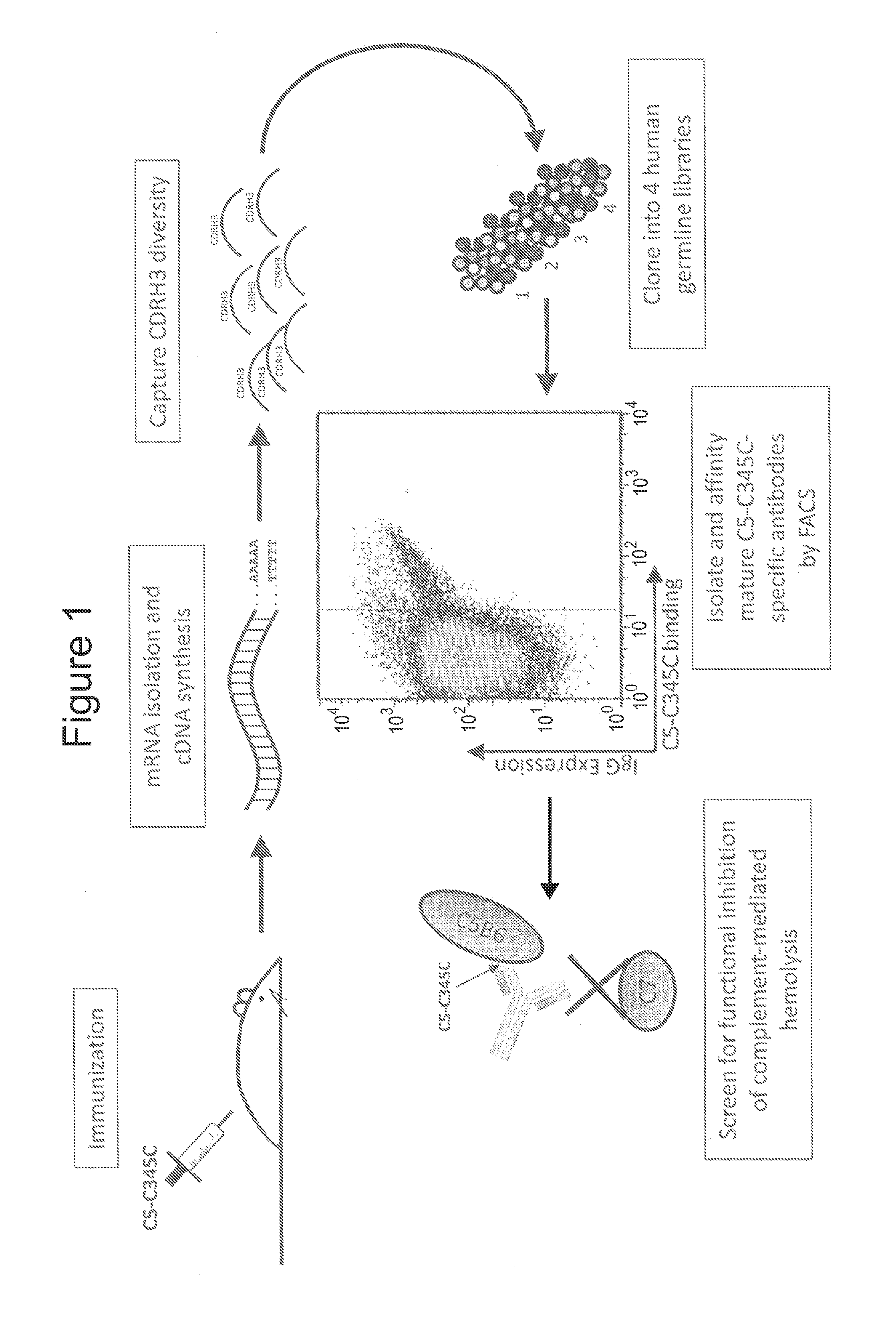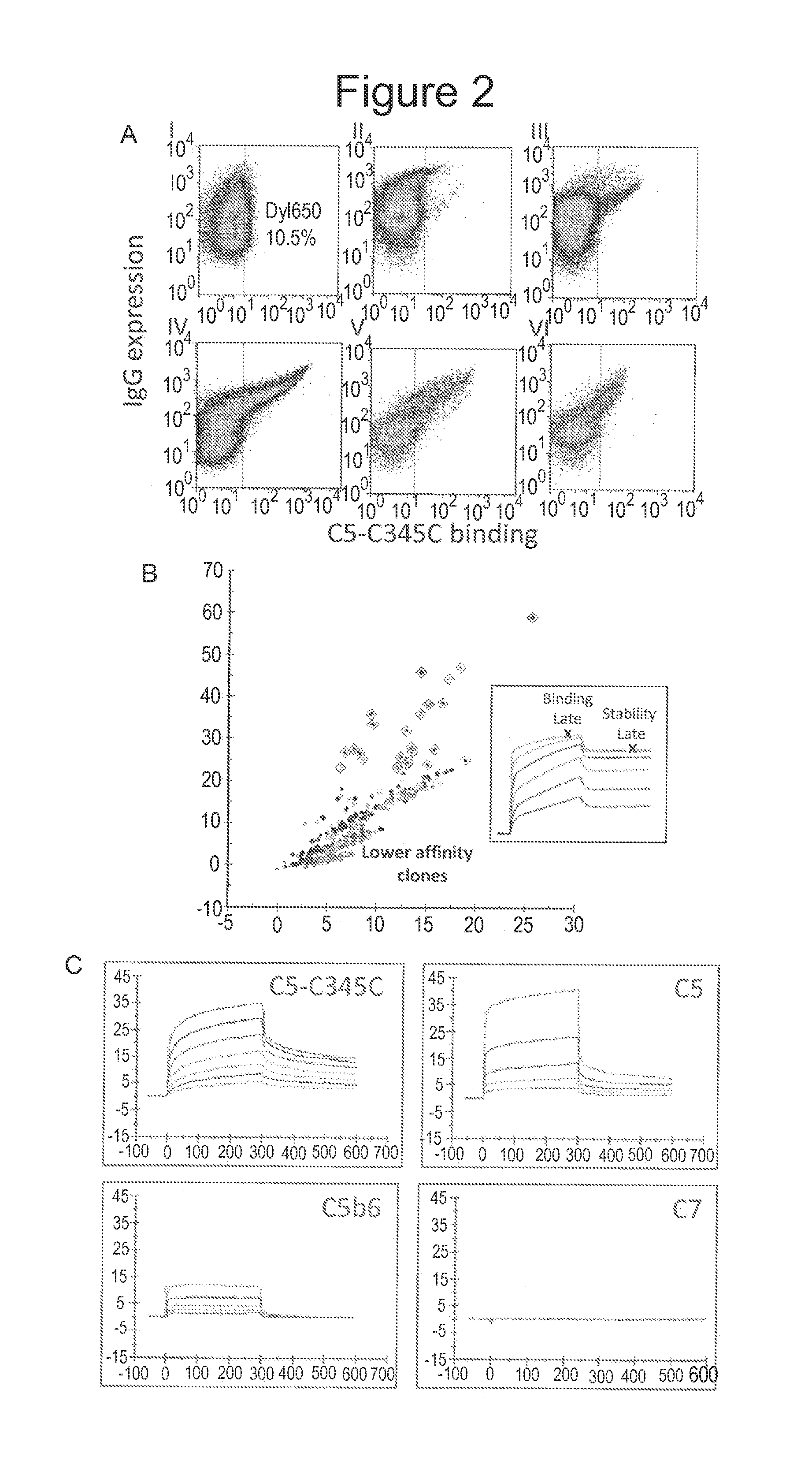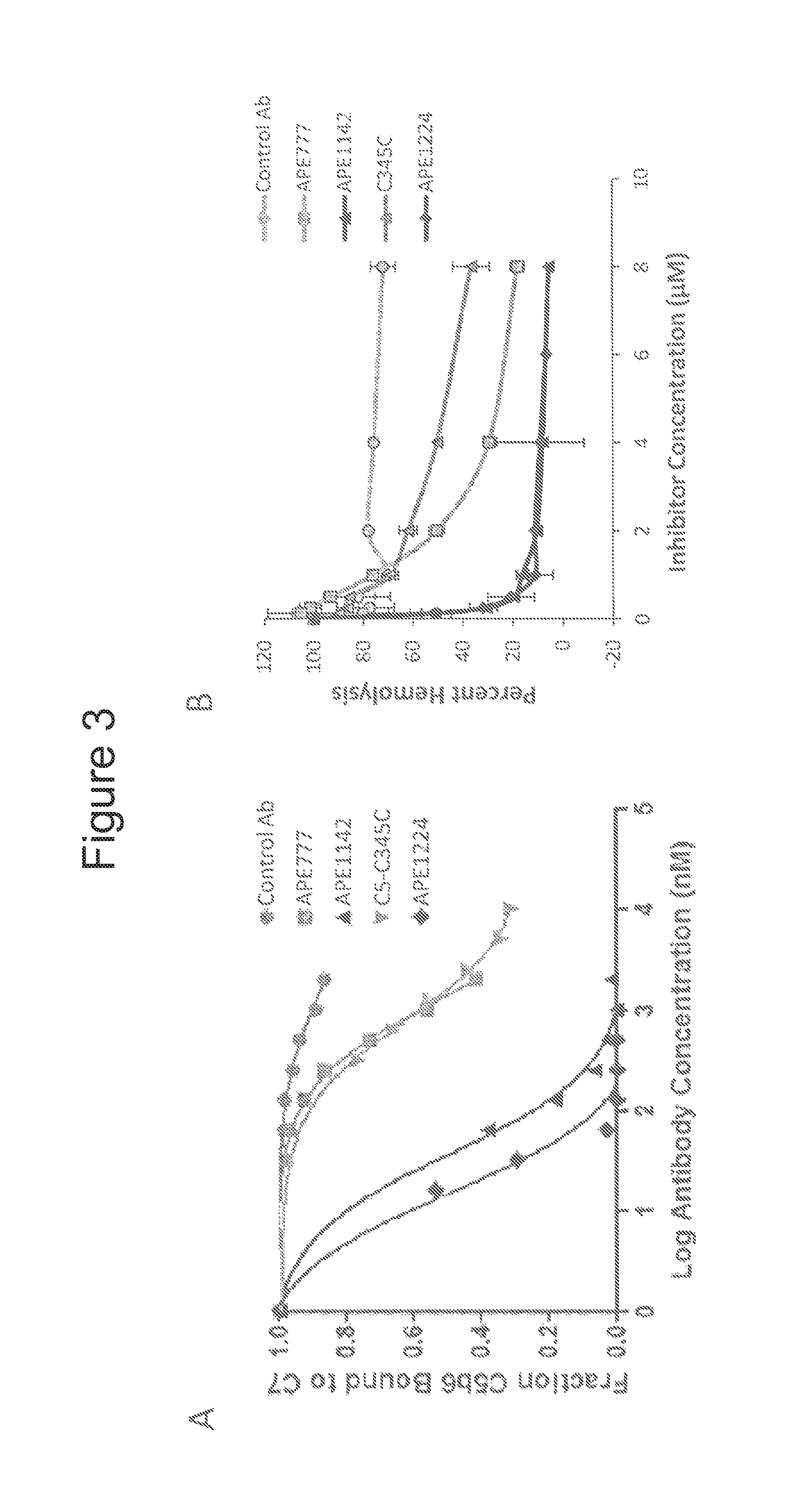Humanized antibodies directed against complement protein C5
a technology of complement protein and human antibody, which is applied in the field of humanized antibodies directed against complement protein c5, can solve the problems of significant immune-suppressive side effects and increased risk of meningococcal infections
- Summary
- Abstract
- Description
- Claims
- Application Information
AI Technical Summary
Benefits of technology
Problems solved by technology
Method used
Image
Examples
example 1
[0088]This example demonstrates a method of generating a humanized antibody directed against the complement C5 protein (an “anti-C5 antibody”).
[0089]C5-C345C (SEQ ID NO: 28) is a peptide comprising the C-terminal 147 amino acid residues of the 1648 residue C5 protein, which have been shown experimentally to initiate MAC formation via contacts with complement proteins C6 and C7 (see, e.g., Bramham et al., J. Biol. Chemistry, 280: 10636-10645 (2005)). Three female BALB / c mice aged 6-8 weeks were immunized with 0.005 mg of sterile-filtered C5-C345C in PBS together with alhydrogel / muramic dipeptide (ALD / MDP) adjuvant. The C345C-adjuvant mixture was injected into the foot pad of each mouse with a 26-gauge needle. Bi-weekly immunizations were evenly spaced over the course of 28 days. Mice were bled from the tail vein before injections, and blood was stored at −20° C. for further analysis. Mice were euthanized, spleen and draining (popliteal) lymph nodes were harvested, and cell pellets we...
example 2
[0097]This example describes a method of affinity maturing nucleic acid sequences encoding humanized anti-C5 monoclonal antibodies.
[0098]Plasmids containing nucleic acid sequences encoding the isolated HC / LC pair of the antibody APE777 (see Example 1) were transfected with a plasmid encoding activation-induced cytidine deaminase (AID) for in vitro affinity maturation by somatic hypermutation in the mammalian cell display system described in Example 1. Following induction of somatic hypermutation via expression of AID, cells expressing higher affinity variants of the starting antibody were isolated by iterative rounds of FACS sorting using decreasing concentrations of fluorescently labeled C5-C345C, with approximately 0.5% of the brightest cells collected at each round. Early rounds of sorting for each strategy were carried out at low nM concentrations of C5-C345C under avid binding conditions. Starting in round three, antibody affinities for C5-C345C in each strategy were sufficient...
example 3
[0104]This example demonstrates that the anti-C5 monoclonal antibodies described herein can inhibit the biological activity of the complement C5 protein.
[0105]A BIACORE™-based blocking assay was developed to assess the functional activity of the anti-C5-C345C antibodies described above. Formation of the membrane attack complex (MAC) of complement involves proteolytic cleavage of the C5 protein to C5a and C5b, followed by sequential binding of activated C5b to complement C6, C7, C8, and C9 proteins (see, e.g., Muller-Eberhard, Ann. Rev. Immunol., 4: 503-528 (1986)). C5b first reacts the complement protein C6 to form an intermediate complex (C5bC6), followed by irreversible binding of C5bC6 to C7 to form the C5b-7 complex. Antibodies targeting the C5interaction domain C5-C345C are expected to block binding of C5b6 to C7 and subsequent MAC assembly. In this assay, the surface of a series S CM5 chip was immobilized with 3,000 RU of anti-C7 capture antibody (Complement Technology, Inc., ...
PUM
| Property | Measurement | Unit |
|---|---|---|
| in vivo half life | aaaaa | aaaaa |
| in vivo half life | aaaaa | aaaaa |
| in vivo half life | aaaaa | aaaaa |
Abstract
Description
Claims
Application Information
 Login to View More
Login to View More - R&D
- Intellectual Property
- Life Sciences
- Materials
- Tech Scout
- Unparalleled Data Quality
- Higher Quality Content
- 60% Fewer Hallucinations
Browse by: Latest US Patents, China's latest patents, Technical Efficacy Thesaurus, Application Domain, Technology Topic, Popular Technical Reports.
© 2025 PatSnap. All rights reserved.Legal|Privacy policy|Modern Slavery Act Transparency Statement|Sitemap|About US| Contact US: help@patsnap.com



